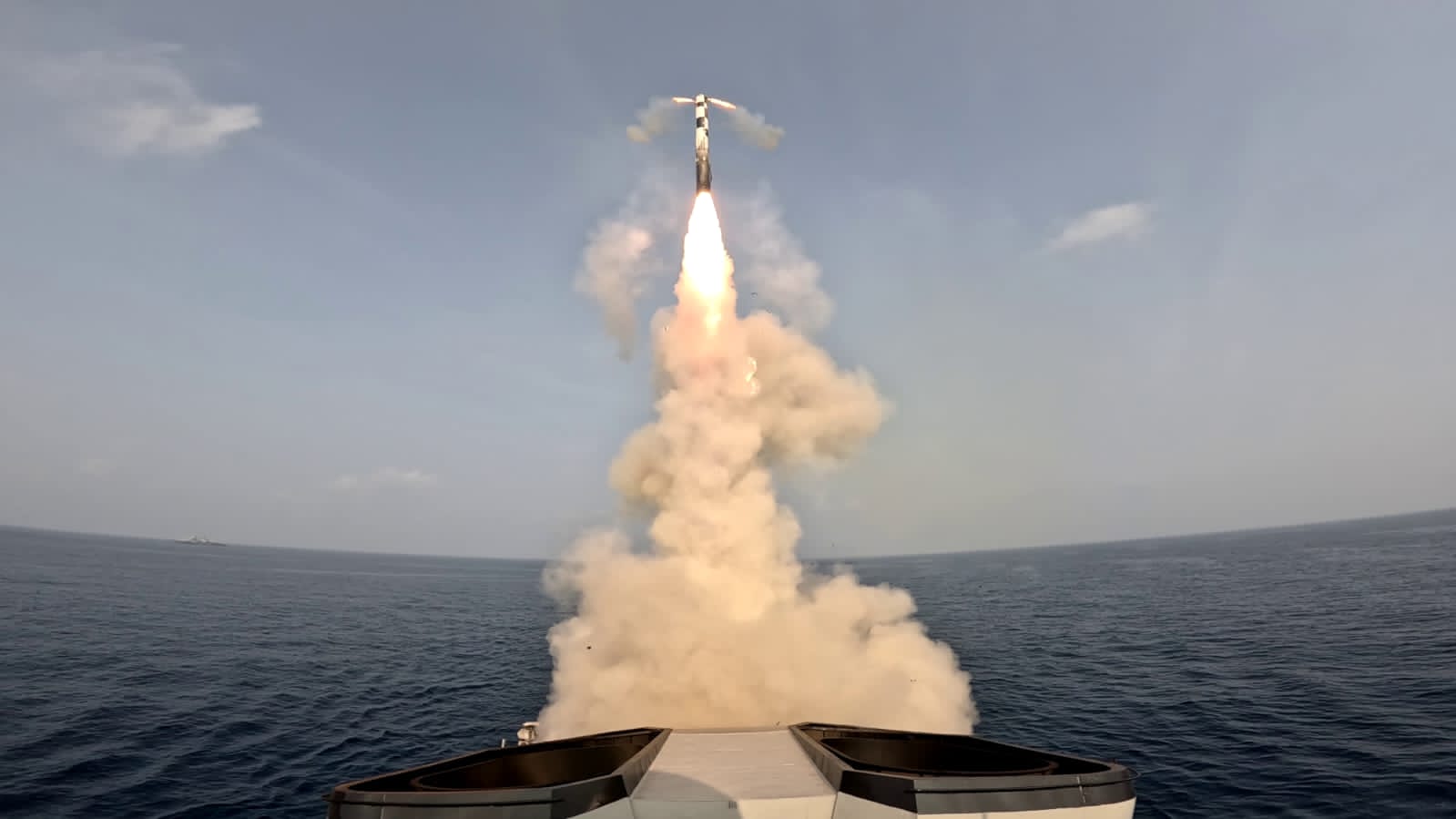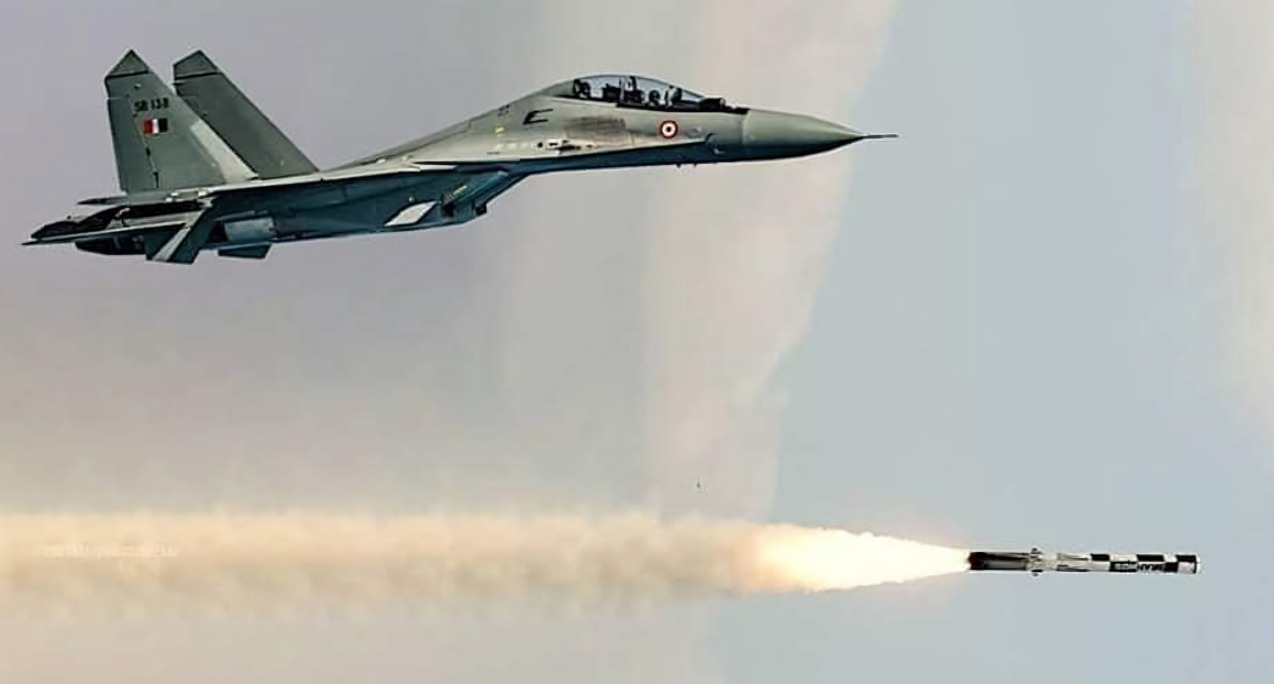BrahMos is emerging as the choice of weapon for Southeast Asian countries embroiled in territorial disputes with China.
After the Philippines armed itself with shore-based BrahMos in the wake of the growing hostility of China, other countries in the region are reportedly looking at the air-launched version of the supersonic cruise missile. It is especially a plausible option for countries flying the Russian-origin fighter jet Sukhoi Su-30 ‘Flanker.’
BrahMos is a modification of Soviet-era anti-ship missiles (Oniks, Yakont) developed by the Reutov Design Bureau in the late 1980s. The name is derived from India’s Brahmaputra and Russia’s Moskva rivers. The first test launch was conducted on June 12, 2001, at the Chandipur range in Odisha, India, and subsequently, the missiles began production at enterprises in both countries.
The original range of the BrahMos supersonic cruise missile, developed under an Indo-Russian Joint Venture, was 290 kilometers. In 2023, the IAF successfully tested an extended-range BrahMos cruise missile with a range of 450 kilometers fitted on a Sukhoi-30 MKI fighter jet.
The BrahMos can fly at three times the speed of sound at 2.8 Mach. Add to it the combat radius of Sukhois, which is 1500 kilometers, coupled with the 450 kilometers extended range of BrahMos. It has become a deadly package capable of delivering weapons at longer ranges.
China’s H-20 Stealth Bomber Threatens ‘Easy Penetration’ Of Himalayan Border; How Can IAF Respond?
Malaysia, Indonesia, and Vietnam also fly the Flankers as part of their respective air forces. Representative of BrahMos at the recently concluded Defence Services Asia (DSA) 2024 exhibition held in Kuala Lumpur said that the company has offered its cruise missiles to Indonesia, Malaysia, and Vietnam.
Meanwhile, a Janes report says Malaysia and Indonesia have shown particular interest in the air-launched BrahMos.
Speaking with Janes at the show, a spokesperson for BrahMos Aerospace said the company offered its cruise missiles to countries such as Indonesia, Malaysia, and Vietnam. “We (BrahMos Aerospace) are in talks with all these countries, and they have shown good interest in the missile,” the spokesperson added.
In March 2023, BrahMos Aerospace CEO Atul D. Rane said that the company was in advanced discussions with Jakarta on a deal worth US $200 million to US $350 million under which it had offered to supply shore-based missiles and a version that can be mounted on warships.
EurAsian Times has contacted relevant authorities and is awaiting an official confirmation.
Vietnam Wants Shore-Based BrahMos
The development comes at a time when India delivered shore-based BrahMos to the Philippines on April 19. The sale of BrahMos to the Philippines has been undertaken through a government-to-government (G2G) deal.
It includes the delivery of three missile batteries, training for operators and maintainers, and the necessary Integrated Logistics Support (ILS) package. A single missile battery usually consists of three mobile autonomous launchers with two or three missile tubes each, along with its tracking systems.
The BrahMos missile system has been acquired under the “Horizon” 2 Priority Projects for modernizing the Philippines’ armed forces amidst spiraling tension in the West Philippine Sea. The missile units will help secure the country with one of the longest coastlines in the world.
Following the delivery, the Philippines will join a small club of Southeast Asian nations with supersonic anti-ship cruise missile capability. Indonesia has operated the ship-based Russian-origin Yakhont supersonic anti-ship cruise missile since 2011; in 2015, Vietnam’s army also purchased two land-based Bastion-P mobile coastal defense missile systems from Russia.

Air-Launched BrahMos To Hit Enemy Hard
The Indian Air Force (IAF) has operationalized the BrahMos-equipped Su-30MKIs. These aircraft enhance India’s strategic capabilities. The IAF had moved the BrahMos-fitted Sukhois to the northern sector from their home base in Thanjavur during the peak of the conflict with China.
India’s move to deploy BrahMos along the Indo-China border evoked a sharp response from Beijing. The PLA Daily, the official publication of the People’s Liberation Army, said: “India deploying supersonic missiles on the border has exceeded its own needs for self-defense and poses a serious threat to China’s Tibet and Yunnan provinces.”
IAF Chief Air Chief Marshal Vivek Ram Chaudhary said: “The combination of BrahMos on the Sukhoi Su-30 has given us a tremendous capability that has enhanced our firepower. It has made the deterrence value of the IAF go up by leaps.”
The IAF has modified 40 of its Sukhois to deliver air-version of BrahMos. And the state-owned Hindustan Aeronautics Ltd (HAL) aircraft maker will modify 20-25 more Sukhois.

The air-breathing BrahMos has become the “prime conventional strike weapon” for the Indian Armed forces. The Indian Army has deployed the land version of the missiles in Ladakh and Arunachal Pradesh along its border with China. Ten Indian Navy warships have been armed, and five other vessels are fitted with vertical launch systems.
BrahMos is the world’s fastest supersonic cruise missile, and it can be launched from submarines, ships, aircraft, or land platforms. It cruises at three times the speed of sound, making it difficult for the enemy to bring it down.
BrahMos is technically a ramjet-powered supersonic cruise missile with a solid propellant booster that can be launched from land-based canisters, submarines, ships, and aircraft. It travels at speeds of Mach 2.8 to 3.0 but is being upgraded to travel faster than Mach 5.0. for the hypersonic variant.
One of its special features is its ability to fly extremely close to the ground to avoid missile defense systems. In fact, during the terminal phase, the missile can fly as low as 10 meters to the ground. The missile relies on active radar seeker or inertial guidance in the final phase.
The interest in BrahMos comes at a time when tensions between the Philippines and China in the South China Sea are resulting in aggressive military confrontations.
In the past decade, China has asserted ever greater control over these waters, using two island chains called the Paracels and the Spratlys. Beijing has expanded its military footprint by building and fortifying outposts and airstrips. Manila has now started offering more forceful resistance to Beijing’s territorial claims.
The deployment of the BrahMos cruise missiles would provide the island country with a semblance of deterrence against the Asian Giant. The delivery, seen as an opening act in purchasing more military hardware from India, also signifies New Delhi overcoming its reticence to become a player in the South China Sea.
Besides, the Philippines, Thailand, Vietnam, and Indonesia have shown keen interest in purchasing the BrahMos missile system.
- Ritu Sharma has been a journalist for over a decade, writing on defense, foreign affairs, and nuclear technology.
- The author can be reached at ritu.sharma (at) mail.com
- Follow EurAsian Times on Google News





